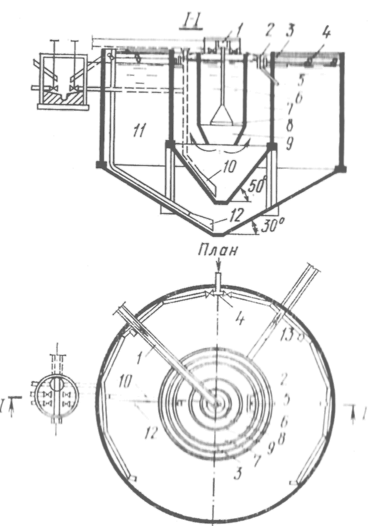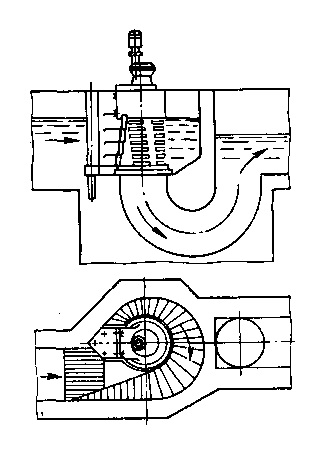5.6.2. Try to complete the tasks (use pencil).
1. What are genes? Give your definition __________________________________________________________________
2. What components is DNA made of? __________________________________________________________________
3. How many chains does DNA molecule have?
_____________________________________________________________
4. What do protein signals do?
_____________________________________________________________
5. What is a mutation?
_____________________________________________________________
6. What is a cell?
_____________________________________________________________
7. What is the function of a cell nucleus
_____________________________________________________________
8. Who are descendants?
_____________________________________________________________
Label different parts in the picture.
< -- Image 21 -- >
5.6.4. Now watch the video “The twisting tale of DNA” (https://ed.ted.com/lessons/the-twisting-tale-of-dna-judith-hauck), created by Judith Hauck, and fill in the gaps in the text while watching.
The Twisting Tale of DNA
Geckos and grasshoppers, worms and watermelons, elephants and Escherichia Coli, man and mushroom. All so different in form and function, but amazingly the same in how their form and function are determined.
First, all these organisms are made of 1. ____________, and every cell of every living thing on earth contains all the information it takes to create and 2. _____________ and make 3. ________________ of itself.
That information is stored in a very long but quite simple double molecule called DNA, or Deoxyribonucleic Acid.
And the DNA of every living organism is made of 4. _________________ of four smaller molecules called 5. ______________. What dictates the difference between a man and a mushroom is the 6. _______________ of these nucleotides in the long DNA chain.
The four differing nucleotide parts, called bases, are made of a few carbon, oxygen, 7. _______________, nitrogen and phosphorus atoms, and the molecules look like this.
And each of these four bases is attached to an identical 8. ______________ molecule, a sugar called 9. _________________ - the "D" in DNA - and a phosphate group.
Let's simplify these nucleotides and show them like this.
So, a single sequence of nucleotides joined by their common sugars would look like this.
And the DNA molecule where such sequences are stored looks like this.
But how does a simple molecule dictate the form and function of millions of different living things?
You can think of DNA as a great library of information, information that is used to do one thing and one thing only: direct the building of different protein molecules.
And it's the proteins that build the cells and keep them functioning and changing and reproducing. Here's where the familiar word 10. '___________' comes in.
If your DNA is a library of information, a gene is a book in that library.
A gene is a segment of the DNA molecule. Let's say your body needs a particular protein, like insulin.
To get it, some of your cells send a 11. __________________ through the bloodstream to the cells in your pancreas, where insulin is made.
That signal protein tells other proteins in the cell's 12. __________________ to open up a part of the DNA 13. ___________________, the insulin gene, and start making insulin proteins.
As soon as enough insulin has been produced, another signal protein comes to the pancreas' cells that tells them to stop making insulin.
It's like looking up a book in the DNA library about insulin, and then putting it back when you're done.
There are genes in DNA for visible and invisible things that make up your body, like genes for eye colour, protein pigments, for skin colour, for hair colour, for stopping and starting bone growth, for your blood type, for how many fingers or arms and legs you have, for proteins that influence how long you live.
Your DNA probably contains between 25 thousand and 40 thousand genes, while the DNA of a worm or a plant or a fruit fly contains about 12 thousand to 20 thousand genes.
Some of those genes have quite different sequences of nucleotides than yours, and some are similar to yours.
Though it happens infrequently, our own nucleotide sequences can change as the result of spontaneous or environmental damage, which might remove or shift a nucleotide position.
This changes the gene involved, and can then change the protein.
Most of these changes, called 14. ______________________, have very little effect on the organism or its 15. ____________________, some are mildly 16. ________________, and a few can make the organism better-suited to its environment.
It is these tiny changes in DNA gene sequences, happening over millions of years, that create the differences among living organisms, from geckos to grasshoppers, worms to watermelons, elephants to Escherichia Coli, and man to mushroom.
· Check if necessary the meaning of the target words using the dictionary and enter them in your vocabulary.
· Correct your answers to the questions above.
In pairs, make flow diagrams to show how genes regulate body’s functions.
Learn more about DNA.








